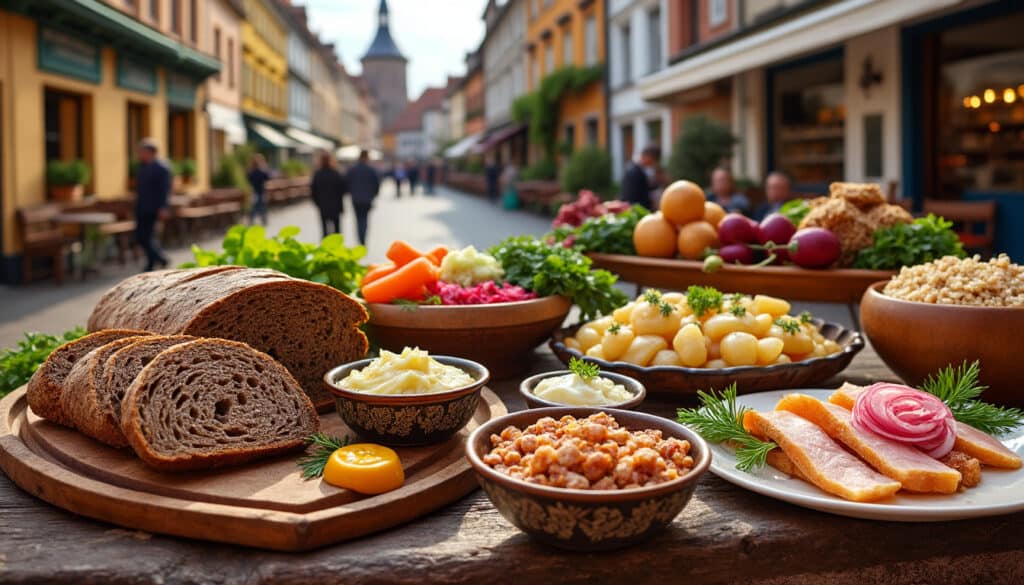The capital city of Estonia, Tallinn, is a vibrant blend of history and modernity, well-regarded for its unique linguistic tapestry. The city is an intersection of various cultures, making it a fascinating destination for travelers who have a keen interest in language and culture. From the ancient alleys of the Old Town to the modern business districts, multiple languages echo through the streets, contributing to the multicultural atmosphere that Tallinn offers. Let’s dive into the linguistic landscape of this charming city, discovering the top languages spoken and their historical significance, alongside the modern trends that shape the way Tallinners communicate today.
The Dominance of the Estonian Language in Tallinn
As the official language of Estonia, Estonian holds a prominent place in Tallinn’s linguistic environment. Nearly 70% of the country’s population speaks Estonian as their native tongue, and the capital is no exception. This Finno-Ugric language, which shares similarities with Finnish and is distantly related to Hungarian, is known for its distinct grammatical structure and phonetics. Its use in education, governmental institutions, and media underlines its importance and pervasiveness across the city.
The history of Estonian language development is deeply tied to national identity, especially during periods of foreign rule. As Estonia embraced independence, the language became a symbol of autonomy and cultural pride. Today, it serves not only as a communication tool but also as a medium through which art, literature, and national history are preserved and celebrated.

Estonian Language in Education and Media
In schools across Tallinn, the curriculum is primarily conducted in Estonian. However, the education system is designed to be inclusive, offering language support for pupils not fluent in Estonian, ensuring all residents have access to education. The prevalence of language apps like Lingualia, Duolingo, and Babbel is notable among both young learners and adults aiming to enhance their proficiency outside of formal education settings.
The media landscape in Tallinn is rich and varied, with television, radio, and print media prominently using the Estonian language. This consistent presence across multiple platforms helps reinforce the language’s role in daily life and ensures its transmission to future generations.
The Role of Estonian in Professional Settings
In professional arenas, fluency in Estonian is often required, particularly in government and public sector roles. This requirement is a reflection of both legal mandates and the practical need to communicate effectively with the majority of the population. However, international businesses may have more flexible language requirements, considering the multilingual capabilities of Tallinn residents.
| Aspect | Estonian Language Usage |
|---|---|
| Education | Primary medium, with support for non-native speakers |
| Media | Dominant language across various platforms |
| Professional | Key in public sectors, flexible in international businesses |
Thus, the Estonian language is not just a means of communication but a pillar of identity and citizenship, shaping the cultural and social fabric of Tallinn.
The Influence of Russian Language in Tallinn
Russian boasts a significant presence in Tallinn, making it the second most spoken language in the city. The roots of this prevalence can be traced back to the Soviet era, during which the migration of Russian speakers to Estonia was common. Today, approximately 320,000 people speak Russian in Estonia, with a substantial portion residing in Tallinn.
Russian is especially prevalent in certain neighborhoods, contributing to a rich tapestry of cultural enclaves. This language carries historical weight and remains a bridge connecting many residents to their familial and cultural heritage, thus maintaining its significance in Tallinn’s multilingual tapestry.
The Role of Russian in the Business and Social Sectors
In the business sector, Russian is invaluable, particularly in industries such as commerce, tourism, and hospitality, where communication with Russian-speaking tourists and residents is frequent. This also aligns with Tallinn’s strategic position as a gateway between Western Europe and post-Soviet states, facilitating trade and tourism.
Socially, Russian-speaking communities have long established networks, community centers, and social clubs, providing areas for cultural expression and community support. Language learning platforms like Rosetta Stone and Pimsleur often feature Russian courses for those interested in tapping into this expansive cultural sphere within Tallinn.
Russian Language in the Educational Landscape
Russian continues to be offered in some schools as a language of instruction or as a second-language option. This educational policy mirrors the city’s bilingual realities and caters to the needs of a diverse student population.
- 🎓 Russian as a teaching language in select schools
- 📚 Supportive resources for Russian language education
- 🌐 Bilingual schools and immersion programs
In conclusion, Russian thrives as both a daily communication tool and an anchor of cultural heritage in Tallinn, navigating between its past and present roles in society.
English as a Lingua Franca in Tallinn
English is gaining enormous traction within Tallinn, particularly among the younger generations and professionals. The language’s growth in prominence is a response to Estonia’s ongoing globalization and entrepreneurial spirit, marking Tallinn as a hub for international business and tourism.
English is not just an academic subject but a functional necessity in many sectors, especially in tech and startups. The high level of English fluency among Estonians, particularly those in urban settings, is a testament to the country’s commitment to being globally connected.
English in Education and Professional Settings
Education in English is increasingly available, with international schools and bilingual programs offering courses in this global tongue. Language learning platforms such as Memrise and Busuu are popular tools that support language acquisition, reflecting the enthusiasm for mastering English in modern Tallinn.
- International schools offering English curriculum 📚
- English courses at universities 🏫
- Widespread use in tech and business sectors 💼
English’s Social Impact and Usage
The social scene in Tallinn, with its cafes, bars, and cultural events, often leverages English to cater to an international audience, ensuring inclusivity and engagement across diverse demographic segments. The English language is pivotal in connecting locals with the expatriate community and tourists alike.
| Area | English Language Usage |
|---|---|
| Education | Growing presence in international and bilingual schools |
| Professional | Key language in tech, business, and tourism |
| Social | Commonly used in social settings and events |
English’s role as a lingua franca continues to augment relationships and opportunities in the multicultural setting of Tallinn, fostering a globally attuned capital.
Other Languages Adding to Tallinn’s Diversity
Besides the three dominant languages, Tallinn is enriched by various other languages spoken within its borders. Finnish, for instance, is spoken by a large number of residents due to geographical proximity and cultural ties. This is especially noted in commerce and social exchanges, given the frequent cross-country interaction between Estonia and Finland.
Ukrainian and Belarusian communities, established during the Soviet era, have maintained their languages, contributing to Tallinn’s linguistic diversity. Language exchange initiatives and platforms like italki and Tandem often see members from these communities eager to share and learn through conversational practice.
Minority Language Presence and Influence
Minority languages, including German, Swedish, and Latvian, are spoken to varying degrees, each adding unique elements to the city’s cultural mosaic. This diversity is reflected in street festivals, cultural institutions, and community associations dedicated to preserving these languages and traditions.
- 🤝 Language exchanges through platforms like italki and Tandem
- 🎪 Multicultural festivals celebrating linguistic variety
- 🕊️ Community centers fostering cultural integration
The presence and celebration of these minority languages highlight the inclusive nature of Tallinn, which encourages both the retention of cultural identity and the integration into a broader societal framework.
Embracing the Multilingual Fabric of Tallinn
Tallinn’s multilingual environment is a testament to its vibrant history and forward-looking disposition. The city is a place where language is both a historic cornerstone and an evolving canvas, reflecting wider global trends of connectivity and diversity.
For travelers and language enthusiasts alike, Tallinn offers a fertile ground for exploration. Whether engaging with locals in Estonian, navigating social events in Russian, or conducting business in English, the city’s linguistic landscape is as dynamic as it is diverse.
Language Learning and Cultural Engagement
Language learning platforms such as Lingualia, Duolingo, Rosetta Stone, and Pimsleur afford limitless opportunities for those eager to dive into Tallinn’s linguistic waters. They not only assist learners in mastering languages but also offer insights into the cultural nuances that accompany them.
- 📱 Use of language apps to enhance multilingual skills
- 🌍 Community events for cultural immersion
- 💬 Increased opportunities for intercultural dialogue
The spirit of multilingualism in Tallinn is quintessential of a city that honors its past whilst embracing the future, making it an inclusive haven for all who come to its shores.
FAQ – Languages in Tallinn
- What is the most spoken language in Tallinn?
- Is English widely spoken in Tallinn?
- Are there resources for learning Estonian in Tallinn?
- How important is Russian in Tallinn?
- Can tourists easily get by in Tallinn using only English?
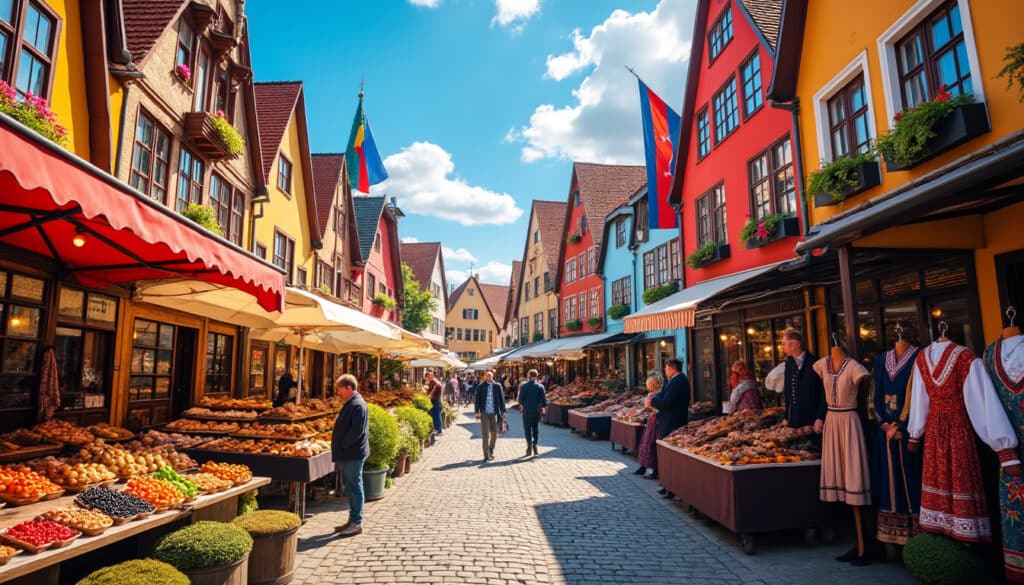
Culture & Local Life in Tallinn
Tallinn, the capital of Estonia, offers a captivating blend of time-honored traditions and modern dynamism. As of 2025, the city is renowned for its rich cultural tapestry and vibrant local life, echoing a fascinating past while embracing a sustainable, digital…
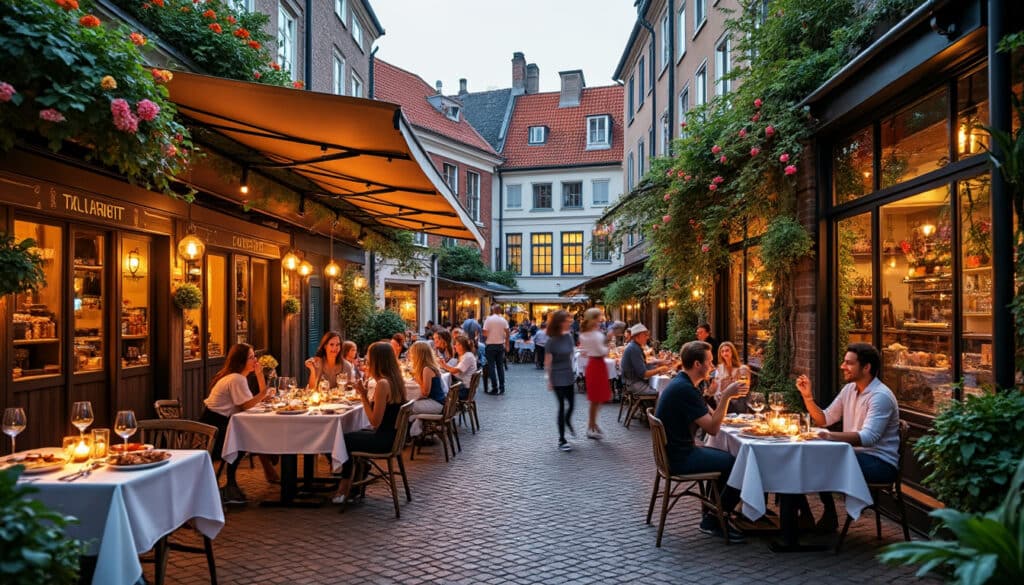
Famed for its enchanting medieval architecture and vibrant cultural scene, Tallinn, Estonia’s capital, is a rising star in the culinary world. With an eclectic mix of traditional and avant-garde cuisine, this city offers a gastronomic adventure for every palate. From…
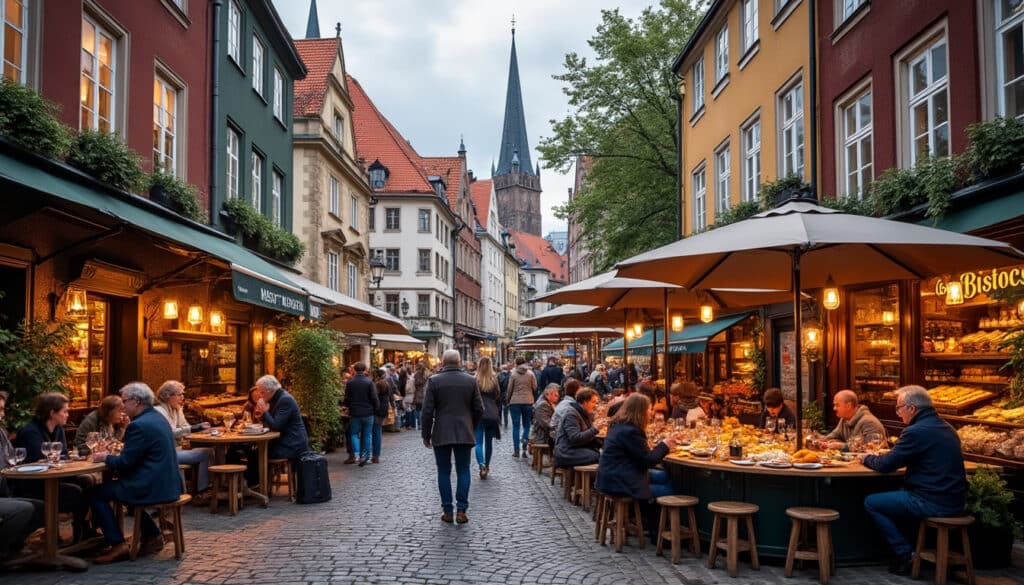
The captivating city of Tallinn, Estonia, offers many experiences to both its residents and visitors. Among its many attractions, the city’s unique meal times and dining culture stand out. Tallinn, the capital of Estonia, provides a captivating mix of traditional…
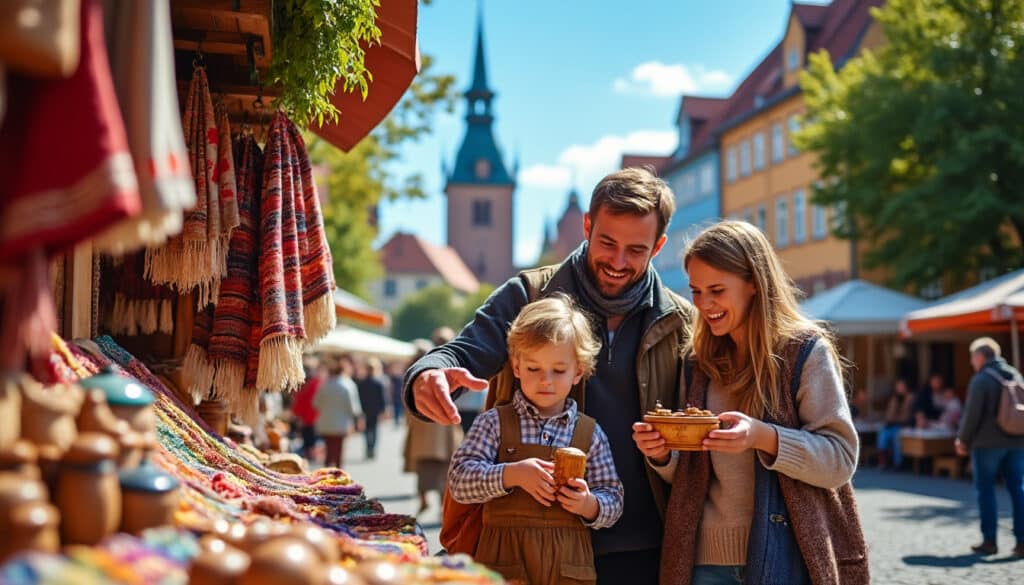
Souvenirs and shopping in Tallinn
Exploring Tallinn is like stepping into a fairy tale, with its cobblestone streets, medieval architecture, and vibrant culture. As you wander through this enchanting city, you’ll want to bring home more than just memories. Souvenirs from Tallinn are not only…
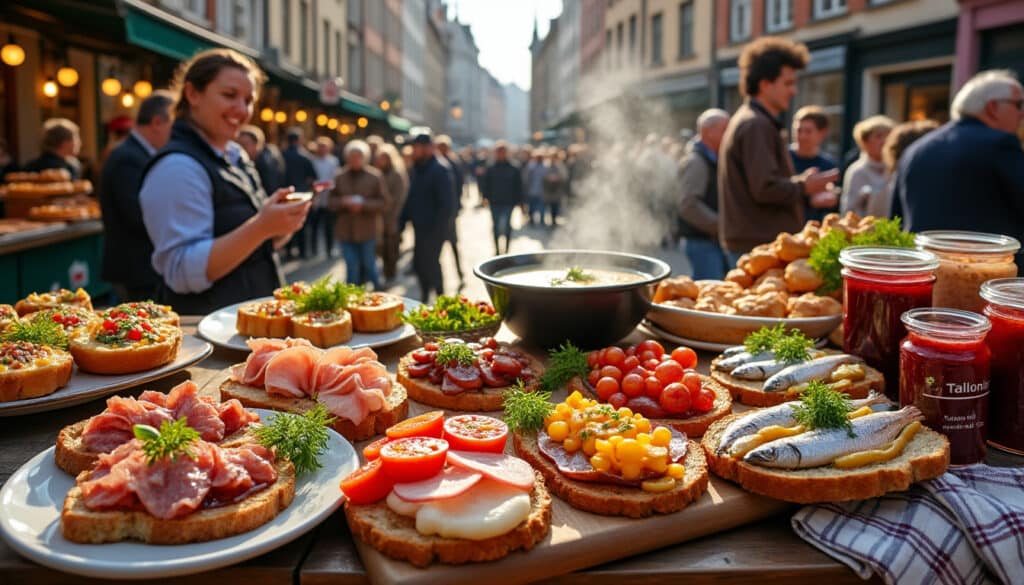
What do people eat in Tallinn?
Tallinn, the capital of Estonia, is a city where history and modernity intertwine harmoniously, offering visitors a unique culinary experience. This city is not just about medieval architecture and cobblestone streets; it’s a gastronomic haven where traditional Estonian dishes meet…


